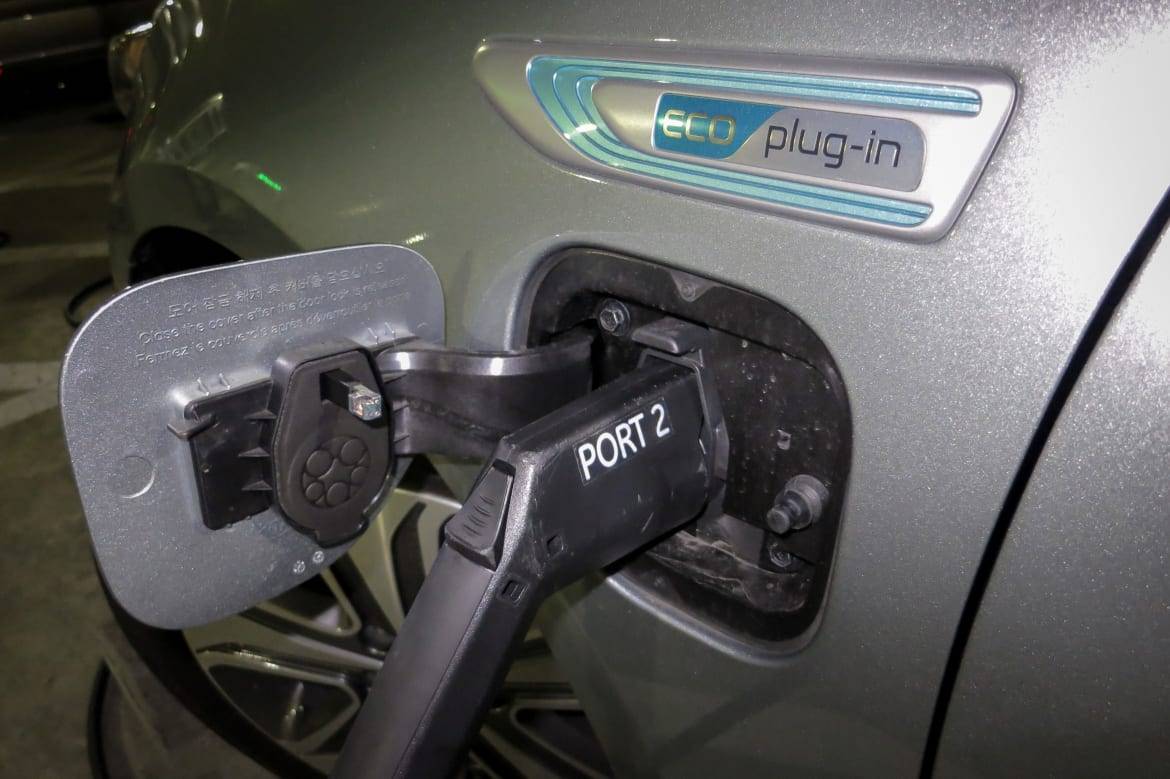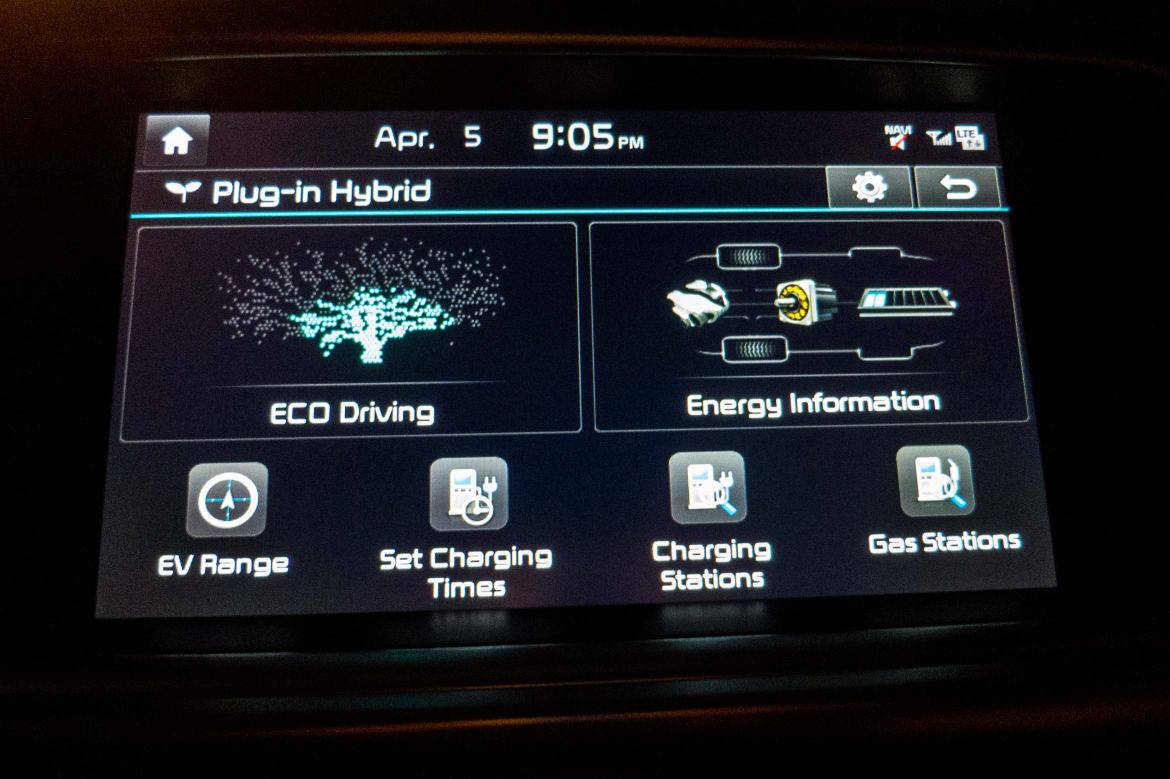2017 Kia Optima Plug-in Hybrid: Real-World Fuel Economy


CARS.COM — Plug-in hybrids are growing up, at least on paper. Some newer models appear to be able to put a real dent in your gasoline habit as well as offer enough utility to be a family’s first, or only, vehicle.
Related: 2017 Chrysler Pacifica Hybrid: Real-World Fuel Economy
Many have enough range for daily commuting without gasoline; roughly two out of three Americans drive 15 miles or less one way, a 30-mile round-trip. And new batteries are lighter and smaller, allowing packaging that intrudes less on a vehicle’s space for passenger and cargo capabilities close to lighter non-plug-in siblings.
Earlier plug-in hybrids often compromised on one or the other. A 2013 Toyota Prius plug-in is rated for up to just 6 miles of all-electric range, and it gives up a little utility versus a regular Prius hybrid. A 2013 Chevrolet Volt offers up to 38 miles of electric-only range but is a tight, four-seat compact compared to a comparable gasoline-powered five-seat Cruze compact.
Kia’s new 2017 Optima Plug-in Hybrid looks to be progress. It’s a conventional mid-size sedan with five roomy seats and a family-size trunk that is rated for 29 electric-only miles and good mileage as a gas-electric hybrid. But does it deliver on that 29-mile promise in the real world?
I frankly doubted it, so I put it to the test in Washington, D.C., traffic, where good performance in my personal test cycle typically is 80 percent of the EPA’s city-cycle rating. The near-empty battery was topped up at a public 240-volt, Level 2 standard charging station (conveniently both free and located at my local supermarket). Kia says a full charge that way should take about 2 hours, 45 minutes, and it was accurate. Charging takes about nine hours from a regular household plug.

Then I headed out into a chilly evening rush hour. I drove it normally, with climate control, seat heat and lights on, in the EV mode, selected with a mode button on the console. I did nothing to squeeze out extra miles, not using the Active Eco function, which dulls the car’s senses, or even using Kia’s novel Driver-Only button for the climate. (EV mode is operative up to 75 mph; the Optima also has a normal gas-electric hybrid mode and a charge-on-the-go mode that allows you to reserve battery charge for use later in the trip.)
The result was a surprisingly better-than-rated 30 miles at stop-and-go speeds from zero (lots of lights and stop signs) to 45 mph (briefly), with an average of about 13 mph. That’s more than two hours of traffic time, a long commute on electric only. While the engine might kick in in some circumstances, it did not on my test loop.
The Optima gives you an eco report card for your drive; mine was about equally eco-friendly and “normal”, with about 5 percent “aggressive.” That also meant I did not light all the leaves on the car’s infographic monitor available on the dash display. I think it may be time to retire these cutesy EV graphics, though I did like the accompanying, nerdy power flow graphic, as well as the useful list and map displays of available public charging.

There’s a limit to how much of a lead foot I could be given the 202-horsepower combined output from the 154-hp, 2.0-liter gasoline four-cylinder and 66-hp electric motor. But the car is temptingly peppy as an EV thanks to a real six-speed automatic transmission and 151.2 pounds-feet of instant electric torque, more than the gas engine’s 140 pounds-feet.
Running on fossil fuel as a gas-electric hybrid in similar conditions, the Optima delivered about 32 mpg, a little better than my 80-percent-of-city-rating benchmark. The plug-in is EPA-rated 38/43/40 mpg city/highway/combined, slightly less than the 39/46/42 mpg for the hybrid Optima and more than the 28/37/31 mpg for the most efficient 1.6-liter gasoline Optima and 22/31/25 mpg for the sportier 2.0-liter turbo (in which I got about 19 mpg in the city recently, though admittedly it delivered a lot more smiles per mile). Compare them here.
With a home charger and an average commute, most Optima plug-in users could very rarely burn gas for daily use and even more rarely need to visit a gas station — the sedan is rated 103 mpg-equivalent overall. The EPA estimates that a 10-mile-each-way commute at D.C. electric rates would cost less than five bucks a week. And you still have gasoline backup to handle an unexpected afterwork trip without anxiety.
As for capacity for that family trip, the interior is standard Optima — which is to say, roomy in front and back. The battery is behind the rear seat and tire well, which compromises trunk space to about 10 cubic feet, roughly 3 cubic feet less than the regular hybrid and 6 cubic feet less than the gasoline Optima. But the configuration is wide and deep, so it’s all useful space.
Credit Brings Down Plug-in Premium
A downside for the plug-in version remains price. Batteries have gotten cheaper, but they’re still not cheap. For starters, the more limited-volume plug-in is only available in the up-level EX trim — very nicely equipped at $36,105, but not close to the budget Optima gasoline base model’s $23,095 starting price (prices include destination). With comparable trim and equipment, it still is about $5,000 more than the hybrid model and $8,000 more than the gas model.
Plug-in subsidies can help put a thumb on that scale. Based on its 9.8-kilowatt-hour battery capacity, the Optima plug-in qualifies for a $4,919 federal tax credit plus additional subsidies in some states. And if you live in California, you also can qualify for a coveted green solo carpool lane sticker for “transitional zero-emission vehicles.”
I realize that for the EV hardcore, a plug-in hybrid is to a full electric like watered down coffee is to the robust stuff. Its “transitional” technology may delay the all-electric future they envision. But the Optima — as well as similar improved PHEVs (the 2017 Volt offers 53 EV miles and the 2017 Prius Prime offers 25) and PHEVs in other useful configurations (such as Chrysler’s plug-in Pacific minivan and the coming plug-in Kia Niro SUV) — seem a practical way to cut carbon use now for a lot more people in more life situations (even if they keep a sportier ride for weekend fun).





























Former D.C. Bureau Chief Fred Meier, who lives every day with Washington gridlock, has an un-American love of small wagons and hatchbacks.
Featured stories


















